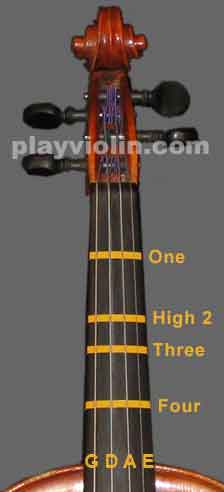Violin Fingering Tape
Need help knowing where to place your fingers on the violin? Try fingering tape!
Need help knowing where to place your fingers on the violin? Try fingering tape!

To assist beginning violinists, some violin teachers use thin strips of colored tape (e.g. 1/8" graphic chart tape or pinstripe auto detailing tape) to mark where students should place their fingers on the violin fingerboard. Other varieties of tapes used include commercial musical instrument tape, circle sticker dots, or masking, painting, vinyl or electrical tape cut to the desired thickness. Read our fingering tape instructions below.